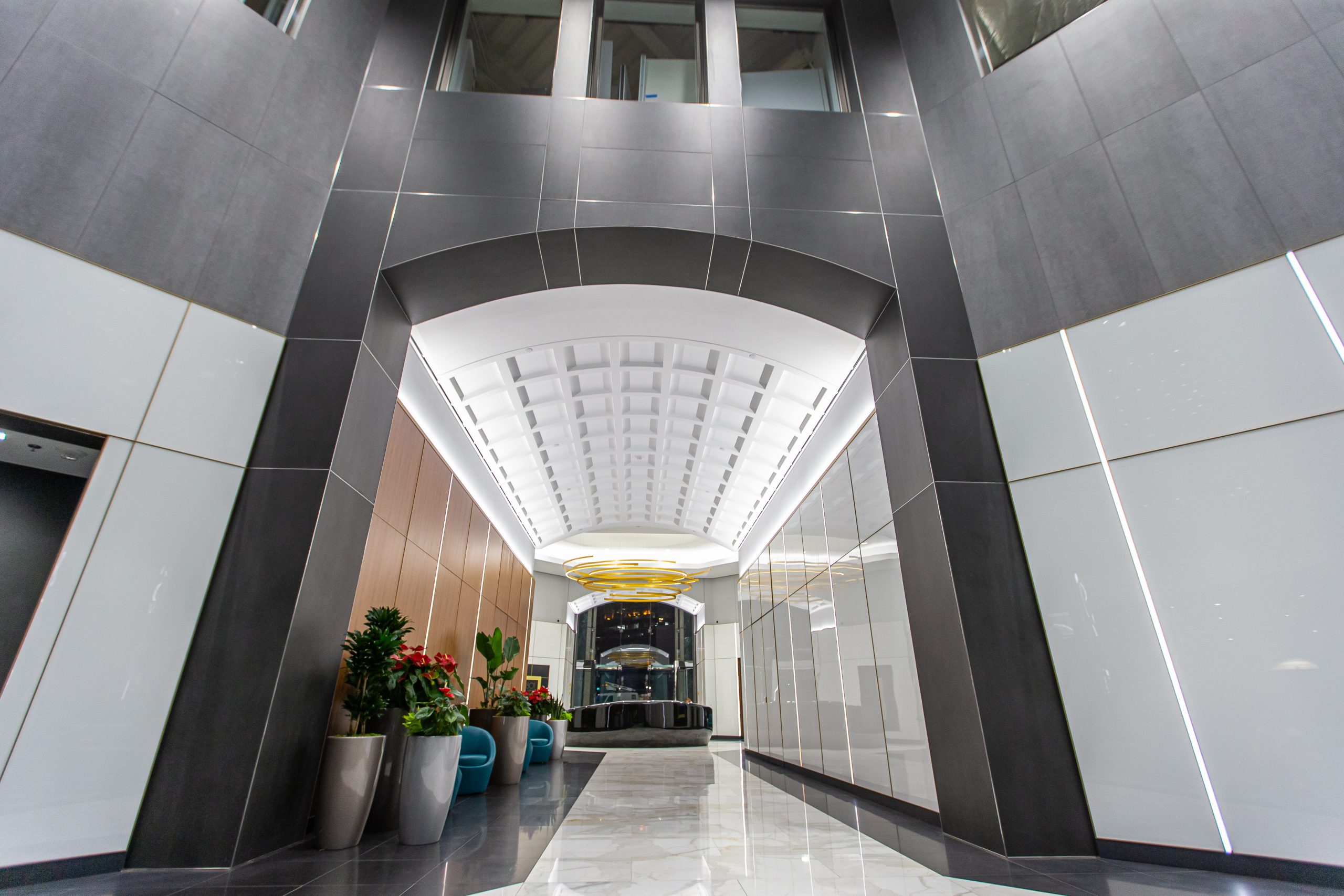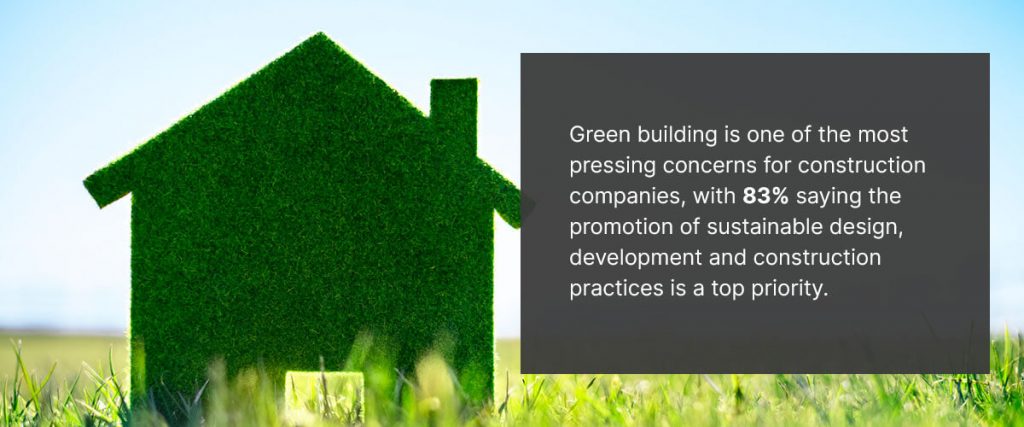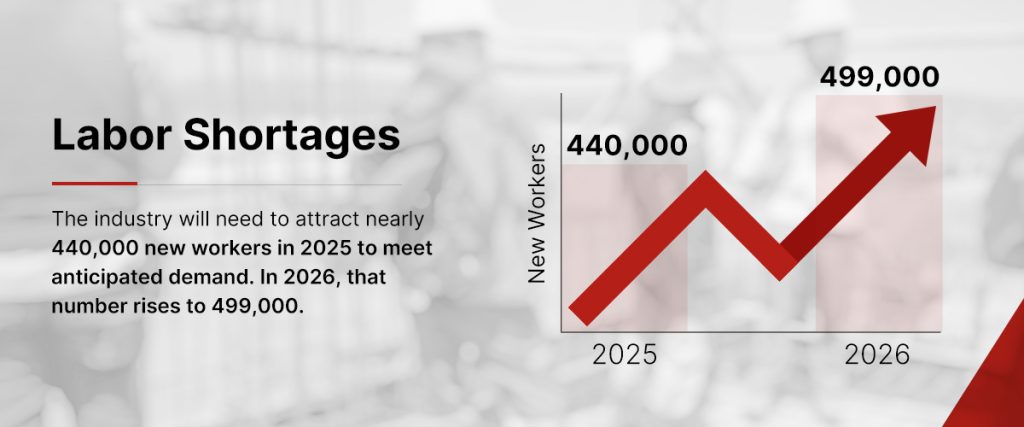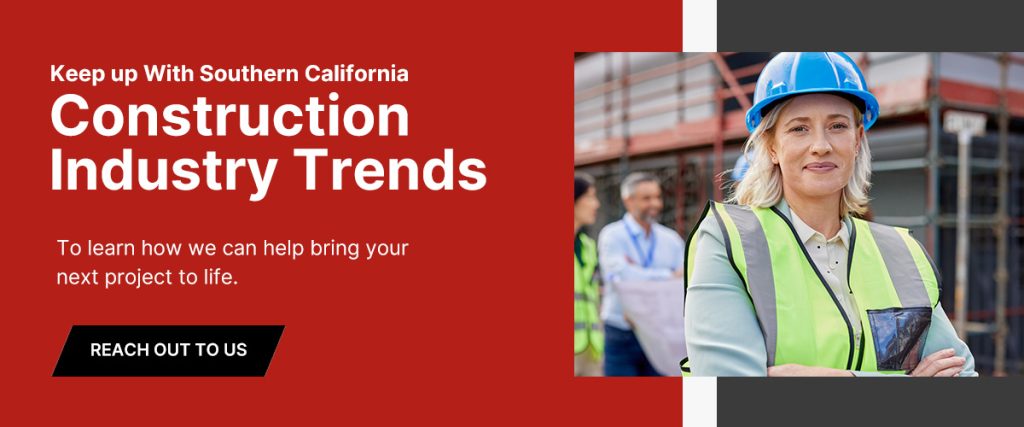
The construction industry isn’t the trendiest or highest-tech field. Still, successful companies work hard to bring their work into the 21st century. From intelligent software to sensors and drones, the digital world has a significant place in construction. These tools can help improve project quality, enhance collaboration, reduce costs and lessen time to completion. New trends in construction materials are also impacting the sector.
Let’s examine some of the leading trends in construction in 2025 and what the future of the construction industry could look like.
1. Artificial Intelligence
Artificial intelligence (AI) is by no means a new technology, but it continues to be a powerful force in the construction industry.
AI’s most prominent use is in automating tasks that humans would ordinarily do. It essentially brings the unique ways humans think into computerized processes. In construction, AI offers benefits like cost estimations and improved safety and efficiency on the jobsite. This kind of processing power can help streamline time-consuming processes and reduce labor demands, helping construction companies save on these overhead costs.
At Alta, one of our favorite ways to use AI is with Matterport, our powerful tool for scanning structures and creating virtual models. It uses scans — like those taken with 3D cameras, 360-degree cameras, LiDAR cameras or your typical smartphone cameras — and intelligently stitches them together to construct a digital version of the structure. These digital twins are valuable tools that allow designers, contractors, facility managers and future inhabitants to see the space in a new way. They can significantly improve collaboration, visualization and efficiency.
Other uses for AI in construction include:
- Forecasting material demands for just-in-time ordering.
- Generating schedules with real-time data.
- Proactively reducing costs by watching for issues with supply chains, pricing and delivery.
Many of these tools also integrate easily with other popular construction platforms, such as AutoCAD, Revit and other business information modeling solutions.
2. 3D Printing
3D printing technology reduces the time spent producing intricate shapes accurately, which makes jobsites more efficient and lowers labor costs. It also helps reduce waste, which addresses one of the key issues related to construction sustainability. As an additional environmental benefit, 3D printing technology can use recycled plastic, biodegradable materials and other eco-friendly alternatives to non-climate-friendly alternatives.
Companies can use 3D printing technology to:
- Customize components rather than relying on prefabricated hardware.
- Create prototypes and models.
- Print concrete for building foundations.
Get on the 3D printing train now — the global market is expected to grow from $23.41 billion in 2025 to $101.74 billion by 2032!
3. Green Building and Living Materials
The construction industry is well on its way to supporting a more sustainable world. Green building is one of the industry’s most pressing concerns. Green building strategies can involve using low-emission processes, reducing waste, prioritizing recycled building materials or using energy-efficient designs.
Green building is excellent for our planet, but it’s also beneficial for the industry. Many clients demand sustainable solutions — 90% of engineering and construction companies have received requests to lower the amount of embodied carbon used in construction projects — and environmentally friendly building can be a significant competitive advantage. Many green practices save money in other ways, too. For instance, choosing locally sourced materials minimizes shipping emissions and offers supply chain resiliency by eliminating import hassles and delays.
Construction companies can also explore living building materials — those that contain microorganisms that participate in the creation of the material. The microbes present in these materials heal cracks and absorb airborne toxins. One example is living brick, which scientists create by introducing cyanobacteria colonies to a solution of sand and gelatin. The microbes absorb carbon dioxide, and the resulting chemical reaction creates the brick.
It’s important to remember that these living building materials can be susceptible to mold. Pairing them with mold-resistant materials, especially eco-friendly ones like GREENGUARD-certified treated lumber, can make the building more sustainable while keeping it mold-free.
Digital technologies will play a leading role in the future of sustainable building. They can bring different stakeholders together and provide the visibility needed to make eco-friendly changes, such as identifying inefficient material use or gaps in the supply chain.
4. Labor Shortages
The United States as a whole is facing a labor shortage, and the construction industry is no different. Associated Builders and Contractors predicts that the industry will need to attract nearly 440,000 new workers in 2025 to meet anticipated demand. In 2026, that number rises to 499,000.
In addition to retaining existing workers and improving productivity with effective training, companies can address the labor shortage by embracing technology. AI-powered and building information modeling (BIM) solutions, which we discuss later, are excellent options.
5. Prefabricated and Modular Construction
While often used interchangeably, these terms are slightly different:
- Prefabricated construction: Prefab describes any construction process that takes place off-site.
- Modular construction: Building modules, such as different rooms, are constructed off-site, and the complete modules are assembled on-site.
These methods are gaining popularity because:
- Factory-controlled processes generate less waste.
- Prefab construction can occur at the same time as site work, speeding up processes.
- They reduce disruption to the surrounding community.
- They help companies reduce weather-related delays.
- The controlled factory setting is generally considered safer.
6. The Internet of Things and the Rise of Smart Cities
The Internet of Things (IoT) is exploding across industries, and construction is no exception — the global IoT in construction market size is expected to grow at a compound annual growth rate of 16.2% from 2024 to 2030.
IoT refers to the devices and technologies that connect and communicate with each other, such as sensors, software and alarms. We see IoT in construction in many different ways:
- Health and safety: IoT devices might monitor a worker’s vital signs for symptoms of heat stress, fatigue or injury. They can record sound levels and send alerts when the worker needs to put on protective equipment. IoT could also help locate workers for incident responses and send alerts to workers and supervisors if the worker approaches a hazardous or restricted area.
- Site monitoring: Sensors and monitors across the jobsite can monitor assets and help you uncover insights about equipment use, employee activities and more. IoT tools might measure humidity and temperature to predict risks, see how equipment is moving and track your store of supplies.
- Equipment assessments: Smart machinery can also track how workers operate equipment, monitor fuel consumption and watch for early signs of damage, such as heavy vibration. These analyses can help maximize equipment life and performance and improve safety overall.
By bringing these types of information under one centralized umbrella, IoT can improve visibility and usher in a more efficient, safer construction environment.
Construction companies are also key in developing smart cities, which integrate IoT and information and communication technologies (ICT) to collect data and improve a city’s efficiency. Smart cities are on the rise, with projected revenue expected to reach nearly $80 billion worldwide in 2025.
7. Remote Management
In many cases, modern technology has made on-site work entirely optional. Thanks to equipment like 3D models, IoT devices and drones, everyone involved in a project can come together from anywhere. Construction software is highly capable, with options like these:
- BlueBeam: BlueBeam is another program we use at Alta. It allows different team members — like architects, engineers and contractors — to work in the same space via the cloud. It gives us a wide range of tools for markup, design, punch items, review processes, proposals and more.
- Raken: Another platform we love for remote access is Raken. It simplifies daily reporting and allows supervisors to share what happens on-site with the rest of the team. It generates reports, stores photos, tracks costs and provides a live dashboard. Check out our case study to see Raken in action.
Remote management is fantastic for improving efficiency, visibility and collaboration. Some advanced technologies, like drones and autonomous robots, can even get us closer to remote worksites. Minimizing on-site needs can improve safety and productivity while helping construction companies hire more flexibly. Skilled candidates may not need to relocate to the jobsite, and the company can limit the expenses and frustrations of travel.
8. Building Information Modeling
One of the most noteworthy trends in construction technology is business information modeling. The global market was valued at $8.12 billion in 2024 and is expected to exceed $22 billion by 2032. With BIM, a build team can create a detailed virtual model and thoroughly study every detail of the project before breaking ground. It’s an excellent resource for the planning and design stages and allows the team to:
- Identify potential problems before they cause delays.
- Reduce costs.
- Provide visualization to clients.
- Improve facilities management.
- Keep track of real-world progress in the digital building.
A construction business that uses BIM can streamline work processes, minimize errors and maximize profits with a powerful, centralized tool.
Keep up With Southern California Construction Industry Trends With Tech From Alta
The construction industry does not necessarily have a reputation for keeping up with the latest technology. At Alta, we take a different approach. With a collection of industry-leading tools at our disposal, we bring powerful technology to every project. It helps us work quickly, save on costs, improve quality, and collaborate with our clients and other project stakeholders in a way traditional companies can’t match.
We’re a certified minority business enterprise with licenses across the United States. To learn how we can help bring your next project to life and embrace some of these commercial construction industry trends, please reach out to us today!




